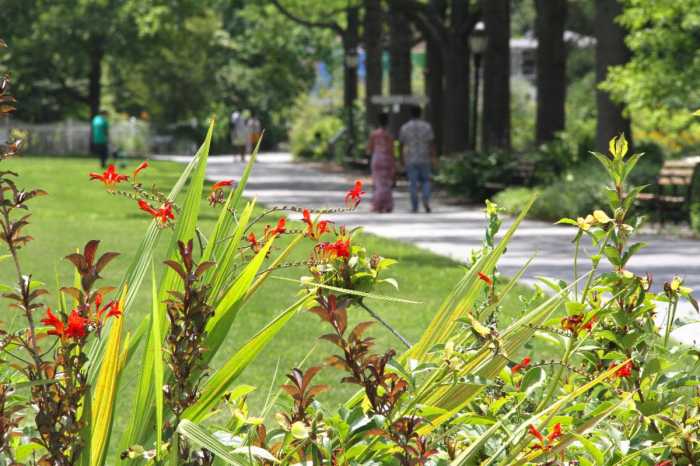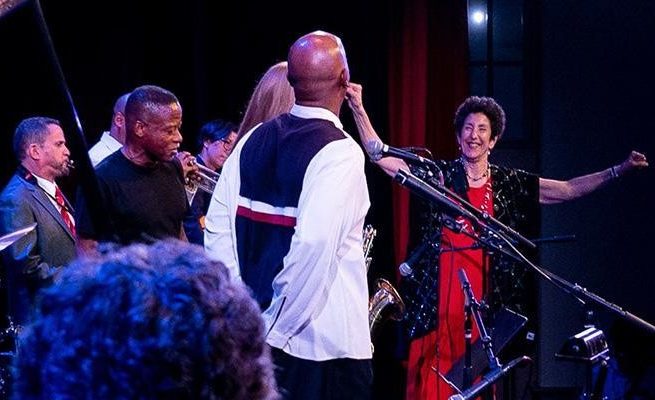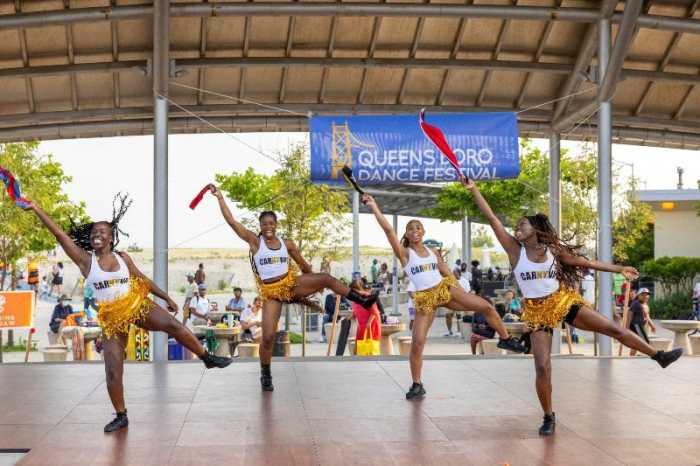The place that houses an art exhibit, whether a big city museum or small town gallery, isn’t there to compete with the art; it’s often just a blank space for displaying the creative works. But in a new Long Island City exhibit, it inspires the show.
“How Much Do I Owe You?,” opening December 12 and running through March 13, is inside the former Bank of Manhattan building on 41st Avenue, which has been virtually vacant for the past 30 years. As the name and space suggests, the show explores the themes of money and the economy, particularly in today’s turbulent financial times.
The exhibit is presented by No Longer Empty, a group that has been putting on these site-specific art exhibits since 2009. “How Much Do I Owe You?” is its 14th show, but first in Queens.
More than an artistic statement, No Longer Empty organizes these shows in vacant sites to help market spaces. “Empty space looks much more beautiful and intriguing if it has art in it,” said No Longer Empty communications manager Lucy Lydon. The organization has held shows at an old belt factory in Brooklyn, a defunct Tower Records in the East Village and most recently the Andre Freedman Home in the south Bronx.
Part of the No Longer Empty’s mission is urban revitalization. It partners with real estate owners, who usually let No Longer Empty use the space for free, and works with them to find a tenant.
About 40 percent of the locations where it has held art exhibits were leased following the shows. After a 2010 exhibit in East Harlem, the restaurant that catered the opening decided to open a new eating establishment in the space, said Lydon. She hopes for a similar outcome following the “How Much Do I Owe You” exhibit.
Housed in the Clock Tower building, the top part of the structure has been turned into lofts, but the former bank has only been used intermittently for events and pop-up shows since it closed in the mid-1980s, said Lydon.
As Long Island City revitalizes and its economic activity shifts, No Longer Empty, which was considering several spaces in the neighborhood, thought that the bank and neighborhood were a good match. The organization also likes to incorporate local artists into the exhibit, and LIC was an ideal place to find them, said Lydon.
“[Long Island City] is vast and incredibly diverse. It was really exciting to go to all the different studios,” she said. Additionally, it was exciting discovering the cultural landscape of Though many of the exhibit’s artists are New York City based, they represent 15 different nationalities and reflect the borough’s multicultural community.
Their work, though all contemporary, is varied as well—large-scale sculptures, interactive pieces, sound installation, film and more, examining themes such as immigrant labor and unfair compensation in Queens and the value of cultural currencies.
Most of the pieces have been created specifically for the show and its site, but Long Island City artist Erika Harrsch has been using money as a theme in her work for years. Originally from Mexico, Harrsch has had an art studio in LIC for 12 years and has been living in the area for the past six. “How Much Do I Owe You?” features two of her pieces and are based on previous works she has exhibited.
They hint at “volatile currency markets, capital circulation and migration, inviting the spectator to reflect on the effects of economic choices,” Harrsch said. Both works feature butterflies made from paper currency. She sees parallels and contrasts between the two. The money, said Harrsch, mimics “the delicate beauty of butterflies in migratory flight,” but the “whimsical appreciation of the flight of a butterfly” is “juxtaposed against the somber heaviness of the continued depression in worldwide financial markets and events.”
“Cash Vault” features currency butterflies floating inside an enclosed clear case using an air blower. Previously, it was an interactive piece, where people could step inside the case, but it has been designed as a sculpture for the “How Much Do I Owe You” exhibit.
The second piece, “Currency Kites,” works well with the Bank of Manhattan’s high ceilings, said Harrsch. It features a large dragon kite with Mao’s face “chasing” several butterfly shaped kites made from U.S. currency, symbolizing China’s increasing role as an economic power.
“Money really represents how we are in society and shapes [us],” said Harrsch. “Do [we] have power over money or does it have power over us?”



































